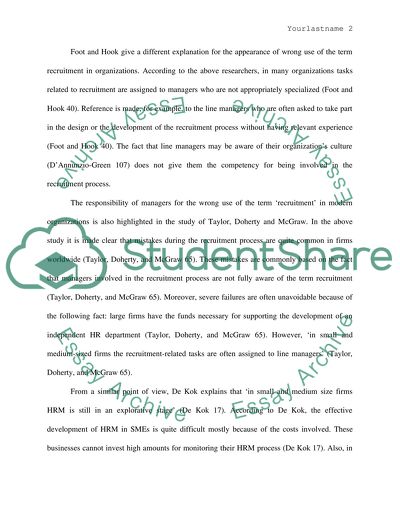Cite this document
(Recruitment: Filling a Job Vacancy Assignment Example | Topics and Well Written Essays - 1250 words, n.d.)
Recruitment: Filling a Job Vacancy Assignment Example | Topics and Well Written Essays - 1250 words. Retrieved from https://studentshare.org/human-resources/1599755-why-is-the-term-recruitment-often-used-incorrectly-what-is-the-correct-term-and-expand-on-the-whole-process-for-filling-a-job-vacancy
Recruitment: Filling a Job Vacancy Assignment Example | Topics and Well Written Essays - 1250 words. Retrieved from https://studentshare.org/human-resources/1599755-why-is-the-term-recruitment-often-used-incorrectly-what-is-the-correct-term-and-expand-on-the-whole-process-for-filling-a-job-vacancy
(Recruitment: Filling a Job Vacancy Assignment Example | Topics and Well Written Essays - 1250 Words)
Recruitment: Filling a Job Vacancy Assignment Example | Topics and Well Written Essays - 1250 Words. https://studentshare.org/human-resources/1599755-why-is-the-term-recruitment-often-used-incorrectly-what-is-the-correct-term-and-expand-on-the-whole-process-for-filling-a-job-vacancy.
Recruitment: Filling a Job Vacancy Assignment Example | Topics and Well Written Essays - 1250 Words. https://studentshare.org/human-resources/1599755-why-is-the-term-recruitment-often-used-incorrectly-what-is-the-correct-term-and-expand-on-the-whole-process-for-filling-a-job-vacancy.
“Recruitment: Filling a Job Vacancy Assignment Example | Topics and Well Written Essays - 1250 Words”, n.d. https://studentshare.org/human-resources/1599755-why-is-the-term-recruitment-often-used-incorrectly-what-is-the-correct-term-and-expand-on-the-whole-process-for-filling-a-job-vacancy.


